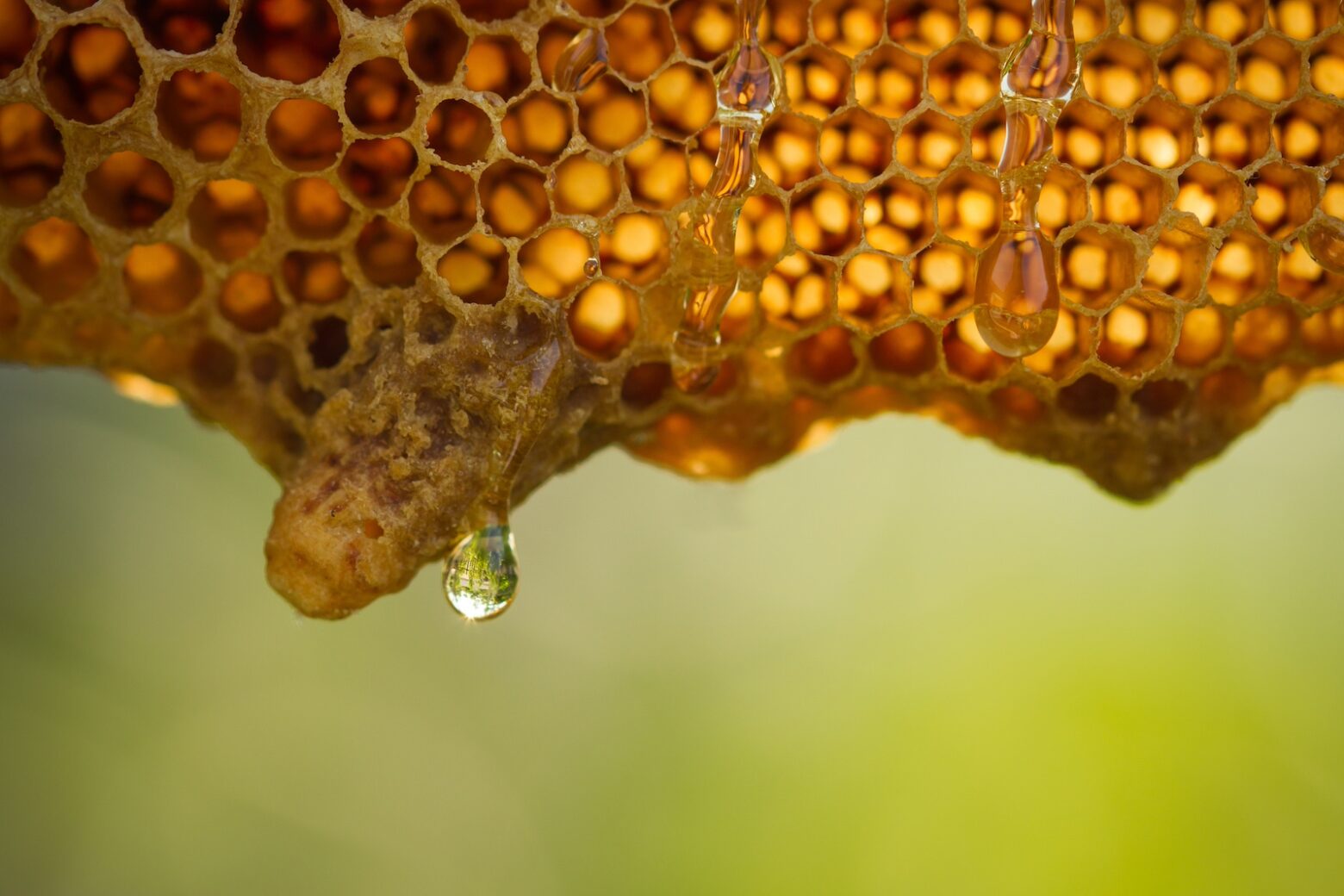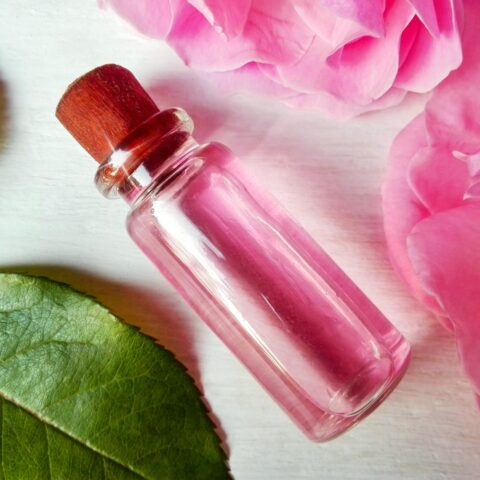What Is Raw Honey? Benefits, Usage, and How to Choose the Best

Honey, that golden nectar crafted by bees, has been revered for centuries for its sweetness and potential health benefits. But raw honey in particular stands out in the world of natural remedies and wellness. Unfiltered and unpasteurized, raw honey is a powerhouse of natural enzymes, antioxidants, and other beneficial compounds.
But for those following the Paleo lifestyle, the question remains: Is this ancient sweetener a good fit?
The Difference Between Raw Honey and Regular Honey
First things first. Honey isn’t just a sweetener—it’s been used as food and medicine for thousands of years. [1] In the past, our ancestors would have savored raw honey straight from the hive, a true taste of nature’s sweetness. Most of what we find in stores today is processed, often through pasteurization. Unfortunately, modern processing methods often strip honey of its unique flavor and potential health benefits.
Raw honey is as close to the honey in the beehive as you can get. It may be strained to remove bits of honeycomb and other debris, but it has not been treated, heated, or processed. This preserves its natural nutrients and enzymes, and it has a lower glycemic index, [2] more nutritional value, and contains more antioxidants than processed honey. In its natural state, raw honey is considered Paleo.
Processed honey undergoes pasteurization (heating) and filtration, and some brands even ultrafilter their honey, removing all traces of pollen, which some consider a potential allergen. Some varieties even contain added sugars. Although there is a lack of controlled studies comparing pasteurized and raw honey, it’s thought that pasteurized honey contains few—if any—of the health benefits of raw honey.
Pasteurization decreases the total antioxidant capacity in foods, “and that ultra-filtration can remove bee pollen and enzymes from the honey,” says Nicholas Pomante, MS, RD, clinical coordinator of dietetics at Eastern Michigan University. “These antioxidants are what give honey most of its beneficial properties,” he continues.
RELATED: 10 Surprising Foods That Aren’t Paleo
The Benefits of Raw Honey
Unlike its processed counterpart, raw honey is unheated and unfiltered, preserving a plethora of natural nutrients and enzymes that contribute to its unique flavor and potential health benefits. Let’s delve into why raw honey is a nutritional force of nature.
- Antioxidant Powerhouse: “Raw honey is touted as having higher antioxidant, enzyme and bee pollen levels than its processed counterpart,” says Pomante. Research shows raw honey is packed with antioxidants like flavonoids and phenolic acids, [3,4] which protect cells from aging and damage caused by free radicals. This can lower the risk of chronic diseases like heart disease and certain cancers.
- Naturally Antibacterial and Anti-Inflammatory: Honey contains hydrogen peroxide [3] and other compounds with antibacterial and anti-inflammatory properties. [3,4] “Honey has been shown to have antibacterial and antifungal properties when ingested or used topically due to a component within in it called propolis,” according to Pomante. This can aid in wound healing, soothe sore throats, and potentially combat infections, he continues.
- Nutritional Profile: Raw honey offers a variety of vitamins, minerals, and enzymes, including vitamin C, calcium, iron, and zinc. [3,4] These nutrients play essential roles in immune function, bone health, and overall well-being.
- Prebiotic Potential: Raw honey contains prebiotic oligosaccharides, [3,4] which nourish beneficial gut bacteria. This can promote digestive health and contribute to a balanced gut microbiome.
- Potential Allergy Relief: Consuming local raw honey, thanks to exposure to small amounts of pollen, is believed to alleviate seasonal allergies. [1,3,4] While more research is needed to confirm this benefit, it’s a hopeful possibility that raw honey could be a natural remedy for allergies.
What to Look for When Buying Raw Honey
While processed honey dominates most store shelves, healthier alternatives exist if you know what to look for. To ensure you’re buying truly raw honey, check the label for the words “100% raw” or “unpasteurized.” Don’t be fooled by terms like “organic” or “pure,” as these don’t guarantee the honey wasn’t heated.
Visually, raw honey tends to be cloudier and thicker than its processed counterpart. It might even be crystallized or solidified, but that’s actually a good sign. It means it hasn’t been heated, preserving its natural enzymes and nutrients. If you prefer a smoother texture, simply place the jar in warm water until the crystals dissolve.
Honey is a flavor chameleon; its color, taste, and aroma is transformed by the nectar of the flowers the bees visit. In the U.S. alone, more than 300 unique varieties exist, each with its own distinct personality, according to the National Honey Board. They range from nearly colorless to a rich, dark brown, with flavors as subtle as a whisper or as bold as a shout. Light-colored honey tends to offer delicate sweetness, while darker versions boast a more robust flavor.
How to Include Raw Honey in a Paleo Diet
The Paleo Diet® emphasizes whole, unprocessed foods, mimicking what our ancestors ate during the Paleolithic era. This means refined sugars, like white sugar or high-fructose corn syrup, are off the table. However, natural sweeteners like raw honey are permissible additions to The Paleo Diet with sensible limits on the quantity.
While raw honey does contain about 70% sugar, it’s important to remember it’s a natural sugar, not a refined one. That being said, moderation is key. The high sugar content means using raw honey sparingly within the Paleo diet is best. Think drizzling a touch on your morning berries or using it in a marinade for grilled meats.
References
- Eteraf-Oskouei T, Najafi M. Traditional and modern uses of natural honey in human diseases: a review. Iranian journal of basic medical sciences. 2013 Jun;16(6):731–42.
- Bobiş O, Dezmirean DS, Moise AR. Honey and Diabetes: The Importance of Natural Simple Sugars in Diet for Preventing and Treating Different Type of Diabetes. Oxidative Medicine and Cellular Longevity [Internet]. 2018;2018:1–12.
- Samarghandian S, Farkhondeh T, Samini F. Honey and Health: A Review of Recent Clinical Research. Pharmacognosy research [Internet]. 2017;9(2):121–7.
- Pasupuleti VR, Sammugam L, Ramesh N, Gan SH. Honey, Propolis, and Royal Jelly: A Comprehensive Review of Their Biological Actions and Health Benefits. Oxidative Medicine and Cellular Longevity [Internet]. 2017;2017:1–21.
Maureen Farrar
Maureen Farrar has spent more than 20 years as a writer and editor for several print and digital outlets. She writes about health, fitness and nutrition.
More About The Author




